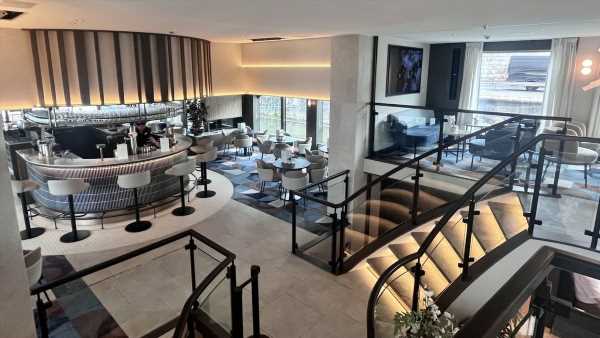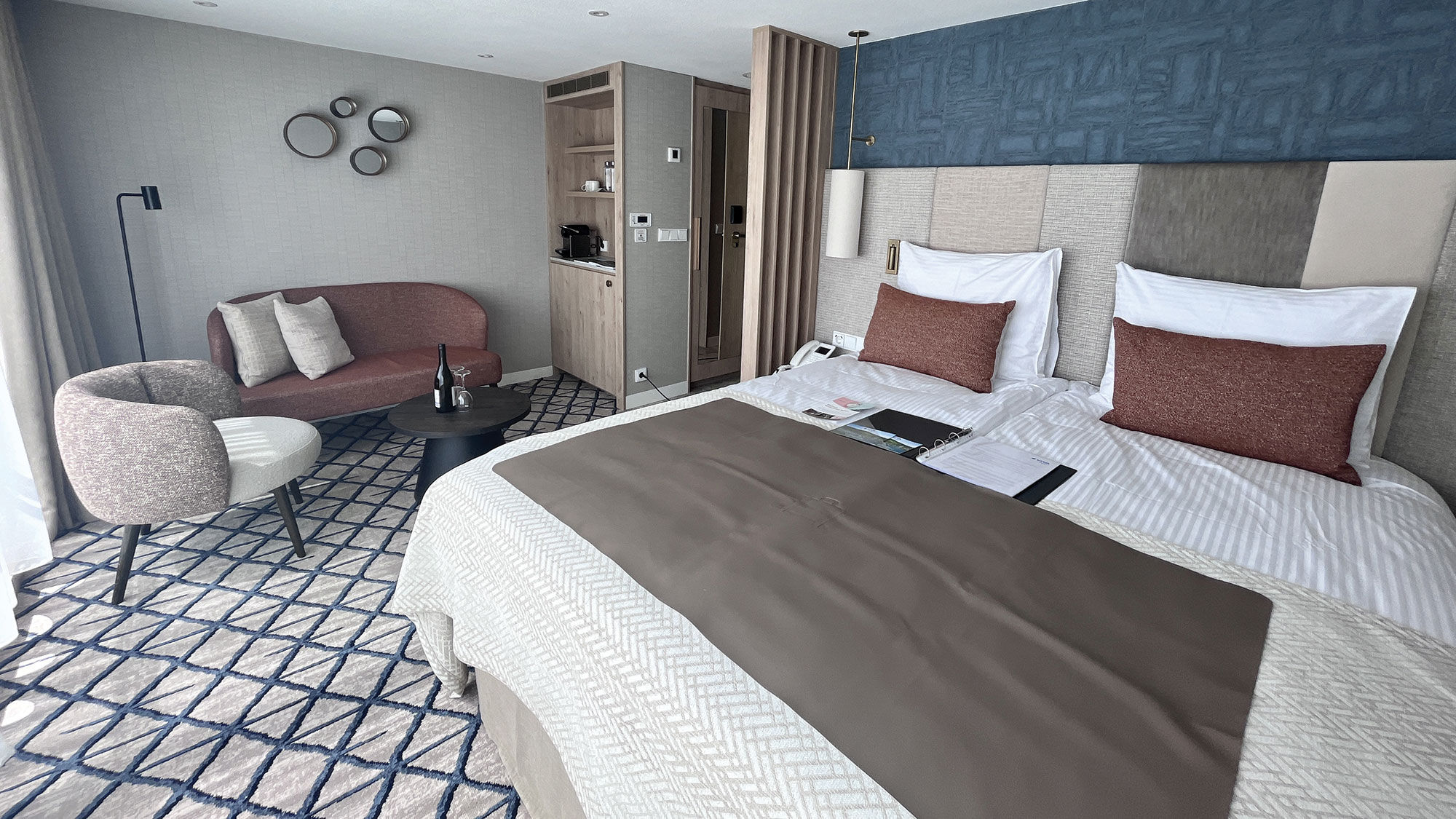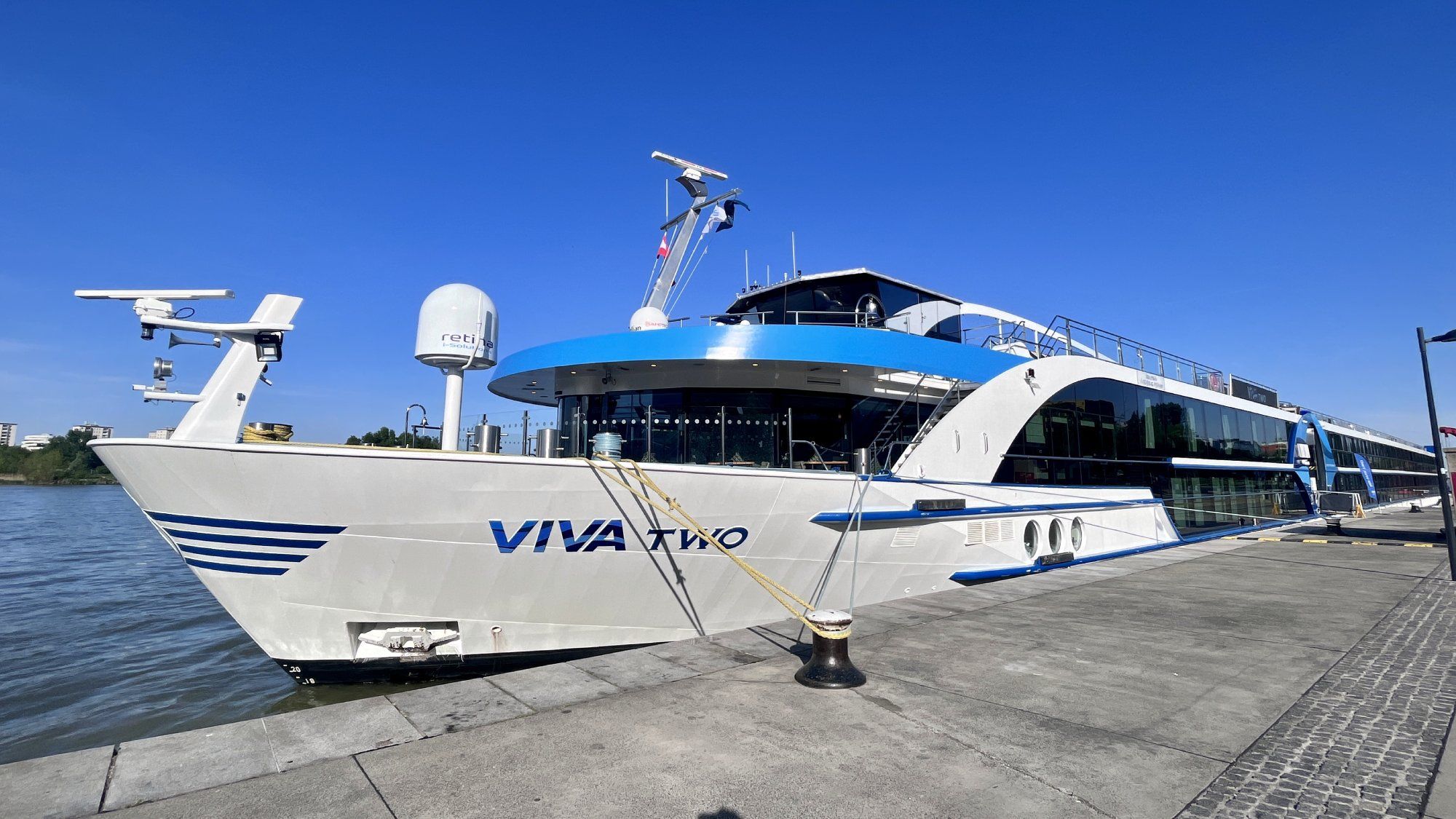ONBOARD THE VIVA TWO — Upon boarding river line Viva Cruises’ newest ship, the 190-passenger Viva Two, now in its sixth week sailing the Danube, the lofty hotel-like reception area seemed similar to those on other river cruise ships.
But I quickly realized that the Viva has its own standout features.
The ship is already distinguishing itself in the market with its shorter itineraries and all-inclusive experience. But its forward-thinking design also stands to help the line attract the North American market it’s courting.
The lobby entrance to the ship’s main eatery, Riverside Restaurant, has a window on the upper level directly above its doors, doubling the height of the lobby space and letting more light stream into its atrium, making it seem bigger than it is. It’s a design I haven’t seen on a river cruise ship before. Even the stairs are interesting, tucked away in the corner of the lobby, diagonally configured like a winding path up to the third-deck lounge. Since more of the upper level can be seen from the lobby because of the glass walls, it’s only natural for curiosity to lead you up there.
- Dispatch, Viva Two: The first look at a young cruise line
Once inside, the Panorama Lounge at first looks like a typical river ship lounge, with two rows of modern armchairs and sofas stretching to the back of the space where a bar would likely be located. But this ship’s bar isn’t located here on the third deck, or on the second deck, for that matter. It’s somewhere in between.
The split-level layout of the Panorama Lounge bar is the Viva Two’s most striking feature. To get to the bar, you walk down a short, winding staircase that opens up to an art deco-inspired bar area and lounge space with banquettes along the windows. The staircase continues into the Riverside dining room. I’m not sure whose idea it was to put a bar in the middle of a staircase, but it was a good one, giving it the feel of a conversation pit. The space earns extra points for having bar stools and seated bar service, diversifying the lounge experience and making you feel like you could be at a trendy downtown bar with water views.
The Viva Two is the first of the brand’s ships to have a third restaurant (its sister ship, the Viva Three, will also have a third restaurant when it debuts next year). The Mediterranean-inspired Moments is open for lunch and dinner, and a sunken seating area in the middle of the restaurant continues the conversation-pit vibe. Reservations are required for the five-course dinner with a wine pairing. Its other restaurant, Viva’s Bistro, located in the aft, features an all-seafood menu.
The spa also gets points for a separate tiled steam room and infrared sauna area that guests can access at any time.
“Because we are cruising all year long, it’s especially attractive in the cold season during January, February, March,” said Andrea Kruse, COO and co-founder of Viva Cruises, adding that the sauna and the hot tub on the sun deck work well on winter wellness cruises. The space also gets better use than a hair salon, for example, since not everyone books hair appointments while cruising, Kruse said.
What is Viva Cruises?
Viva is only 5 years old, but its parent, Swiss shipping company Scylla, has been around for 50 years, building ships for other brands, including Tauck, before deciding to launch its own line.
Based in Dusseldorf, Germany, Viva has mainly European passengers, but the line is working to attract North Americans as it grows.
“Even though we are based in Germany, we are not a German cruise line –we are an international cruise line,” said Kruse, adding that Germany, Scandinavia, Spain and Israel are currently its main markets. “Our goal is to have around 10% [market share] from the U.S. market. Same for the U.K. That would be excellent.”
The company said the Viva Two and the ships that will follow focus heavily on sustainability, with solar panels, food waste-reduction initiatives and better energy conservation to lower its carbon footprint. “We don’t have any buffets on our ships, so we can reduce the food waste by 25%,” Kruse said. “We have water stations across the ship, water bottles in every cabin, and we’re also dealing more with seasonal ingredients to use more local [products].”
Source: Read Full Article



